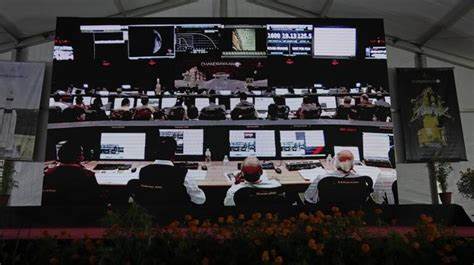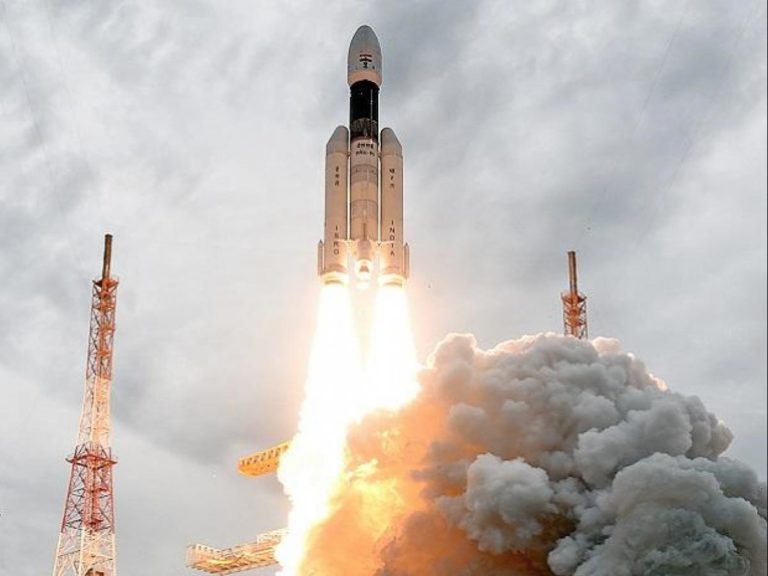Chandrayaan-3: There are no millionaires among ISRO scientists, says Madhavan Nair

Chandrayaan-3: There are no millionaires among ISRO scientists, says Madhavan Nair
The success of India’s space program, particularly exemplified by missions like Chandrayaan-3, has drawn attention worldwide for its ability to achieve remarkable feats within a limited budget. Former ISRO chairman G Madhavan Nair’s perspective sheds light on an interesting aspect that might contribute to this success: the comparatively low salaries of ISRO scientists and personnel.
1. Cost-Effective Solutions: One of the main advantages of having scientists and engineers who receive salaries that are lower compared to their counterparts in developed countries is that it allows ISRO to achieve cost-effective solutions. When personnel costs are a significant portion of a project’s budget, lower wages can lead to substantial savings. This enables ISRO to allocate resources efficiently and invest more in research, technology development, and mission execution.
2. Frugal Engineering: ISRO has become renowned for its philosophy of “frugal engineering,” which focuses on achieving ambitious goals with minimal resources. Lower salaries align with this philosophy, encouraging scientists and engineers to find innovative and efficient ways to accomplish tasks. The need to make the most of limited resources fosters creativity and resourcefulness, resulting in practical and innovative solutions.
3.Motivation Beyond Monetary Compensation: ISRO scientists often choose their careers out of a passion for space exploration and scientific discovery, rather than primarily seeking financial gain. This intrinsic motivation can lead to dedicated and committed work, as scientists are driven by the desire to contribute to humanity’s knowledge and advancement. This mindset can lead to a strong work ethic and a willingness to go the extra mile.
4. Collaborative and Inclusive Culture: The emphasis on shared goals and collaborative efforts rather than individual financial success can foster a strong sense of teamwork within ISRO. Scientists work together towards common objectives, and the focus on the organization’s success rather than personal wealth can create a positive and cohesive work environment.
5. National Pride and Recognition: While financial compensation is important, recognition from the nation and the global scientific community can also be powerful motivators. ISRO’s achievements often garner widespread admiration, making the scientists and engineers involved proud of their contributions to India’s space endeavors.
G Madhavan Nair’s insights into ISRO’s achievements provide a comprehensive understanding of the agency’s success. He underscores the deep-rooted passion and dedication of ISRO scientists, who are motivated by their mission rather than monetary gains. This intrinsic drive fosters an unwavering commitment that plays a pivotal role in propelling ISRO to unparalleled accomplishments.

Nair’s emphasis on meticulous planning stands out as a cornerstone of ISRO’s operations, ensuring optimal resource utilization and effective risk mitigation. He also sheds light on ISRO’s long-term vision, where each mission builds upon the knowledge and experiences gained from previous endeavors. This iterative approach is exemplified by the reuse of technology, such as the PSLV engine, which highlights ISRO’s capacity for continuous improvement and sustainability.
Nair’s narrative underscores the agency’s capacity for innovation, adaptability, and learning from challenges, all of which contribute to its remarkable achievements. In essence, ISRO’s triumphs can be attributed to the harmonious interplay of devoted passion, strategic planning, evolutionary innovation, and a resolute pursuit of knowledge.
G Madhavan Nair’s insights shed light on India’s strategic approach to space missions and its impact on cost-effectiveness. He underscores the pivotal role of indigenous technology in the country’s space endeavors, leading to significant cost reductions. This emphasis on home-grown innovation allows India to execute space missions at a remarkably lower expense, standing at 50 to 60 percent below the costs incurred by other nations for similar missions. Nair’s perspective underscores the potency of leveraging domestic capabilities to drive down expenditures while achieving high levels of efficiency and success.
Nair’s observations are particularly exemplified by the recent accomplishment of Chandrayaan-3. He describes this achievement as a pivotal milestone, marking India’s initial steps into planetary exploration. The success of this mission, in his view, signals the breaking of new ground and the promising commencement of India’s journey into exploring celestial bodies beyond Earth.
Furthermore, Nair points out India’s growing presence in the international space market. He highlights the existing commercial contracts India has with Europe and America and anticipates that these partnerships will flourish further in the wake of Chandrayaan-3’s success. This success not only amplifies India’s reputation as a reliable and capable space player but also augments its potential for expanding collaborations and engagements on a global scale.
In essence, Nair’s perspective encapsulates the essence of India’s space achievements—focusing on indigenous technology, cost-efficiency, pioneering planetary exploration, and international collaborations. These elements collectively position India as a formidable player in the realm of space exploration, poised to contribute significantly to scientific advancement and global space ventures.
G Madhavan Nair’s remarks underscore the global recognition of India’s technical prowess and the quality of its space endeavors, including launch systems and spacecraft. He anticipates that international cooperation, a long-standing aspect of India’s space program, will be further strengthened in the future. Nair’s insights reflect the international community’s increasing acknowledgment of India’s competence in space technology and its potential for impactful collaborations.
Notably, the Chandrayaan-3 mission’s total cost, as reported by ISRO, stands at just Rs 615 crore. This modest budget is strikingly comparable to the production budget of a typical Bollywood movie in the country. This stark comparison emphasizes the cost-effectiveness and resource efficiency that ISRO achieves in its space missions.
Chandrayaan-3’s successful landing on the lunar south pole marks a monumental achievement for India’s space program. The historic event, which took place at 6:04 pm, catapults India into an exclusive group of countries that have achieved soft landings on the Moon. This achievement underscores India’s technological prowess and its ability to master the complex challenge of lunar landings.
The significance of this achievement becomes even more pronounced when considering the context of a recent Russian lander crash on the lunar south pole. India’s successful landing underscores its capability to overcome technical challenges and execute precise missions in an environment that presents formidable engineering hurdles.
By achieving this feat, India becomes the fourth country in history to accomplish a soft landing on the Moon, joining the ranks of the United States, China, and the former Soviet Union. This achievement not only symbolizes India’s scientific and technological advancement but also its perseverance in exploring the uncharted frontiers of space.
In summary, G Madhavan Nair’s remarks capture the global recognition of India’s space achievements, the cost-effectiveness of its missions, and the historic significance of Chandrayaan-3’s successful landing on the Moon. This accomplishment solidifies India’s position as a formidable player in space exploration and technology.




